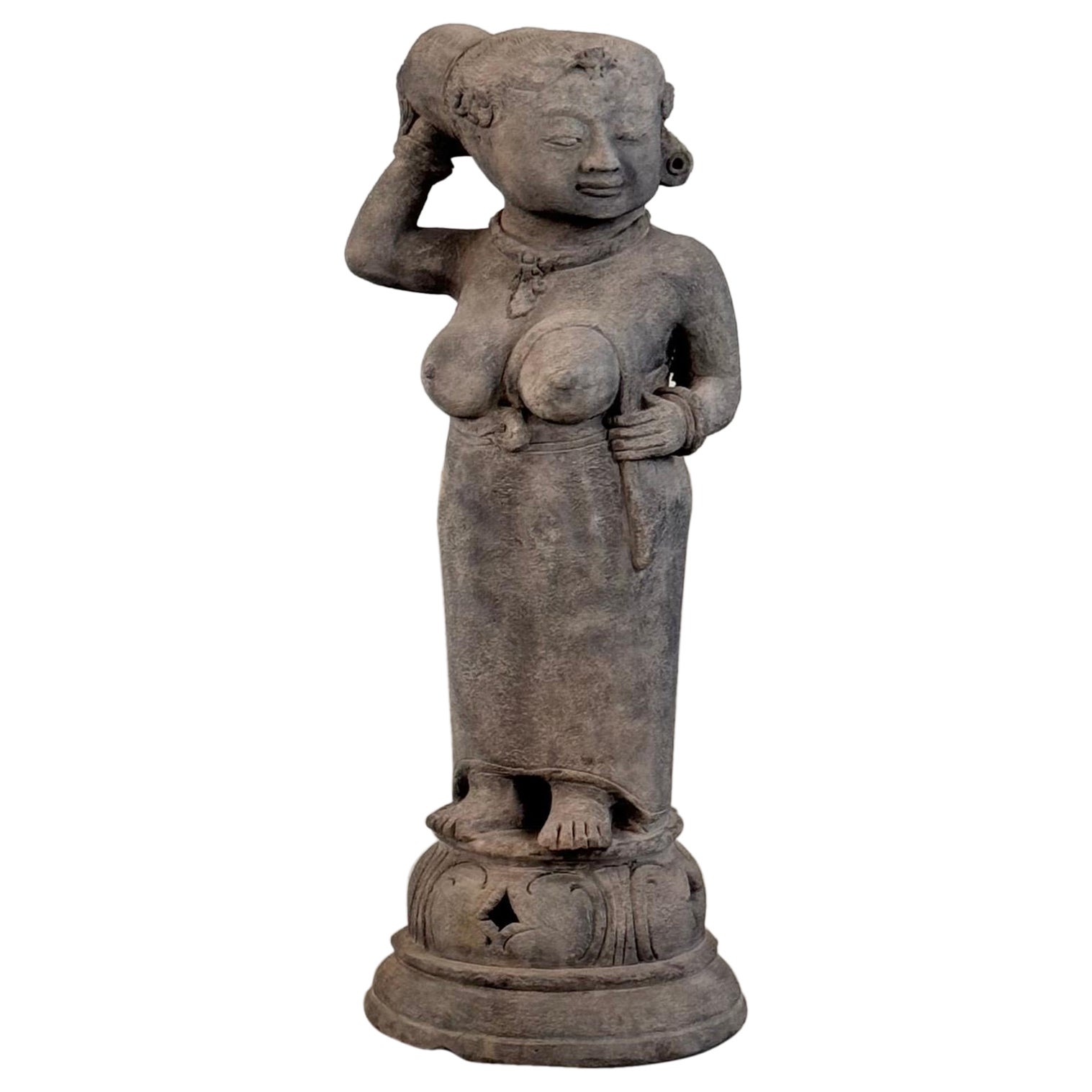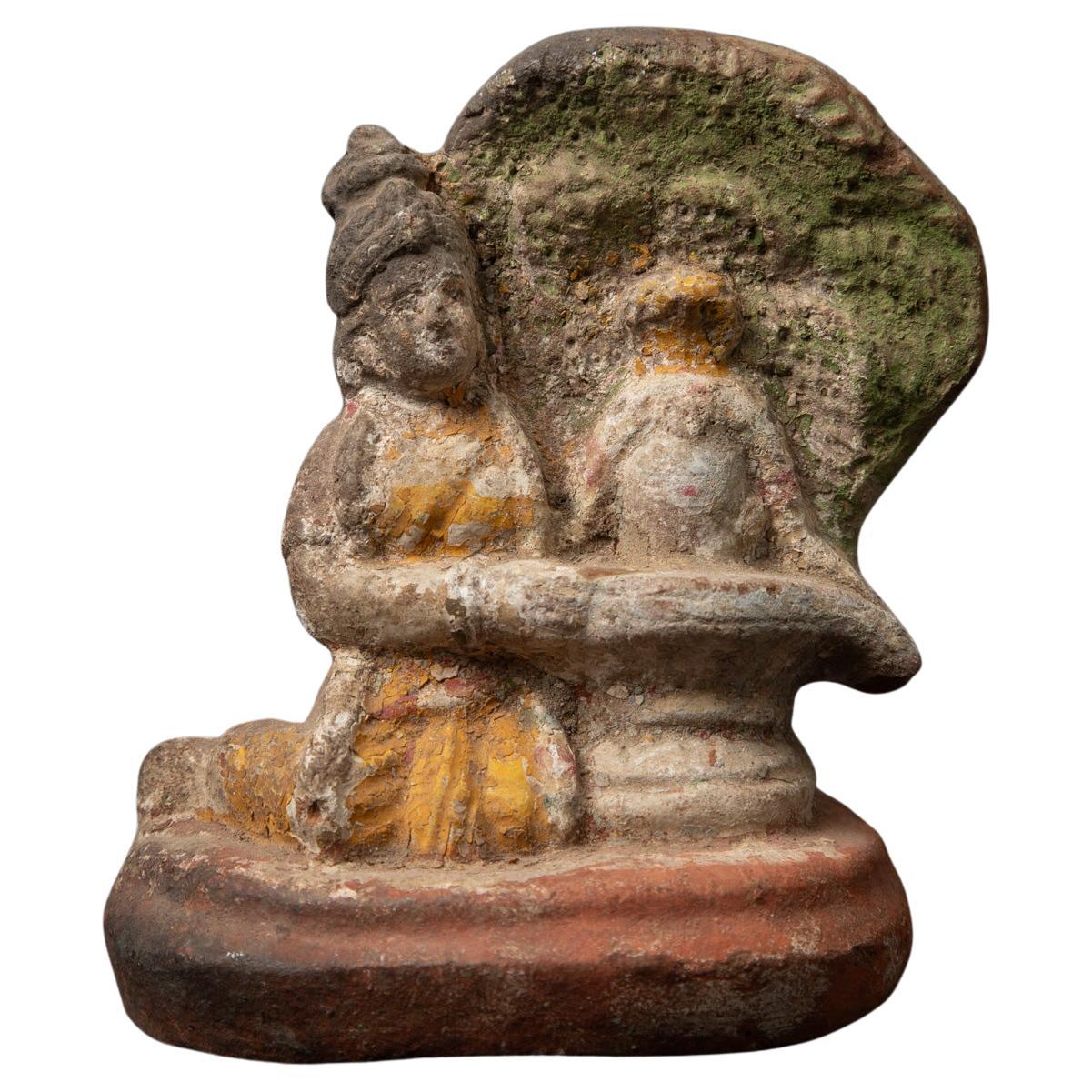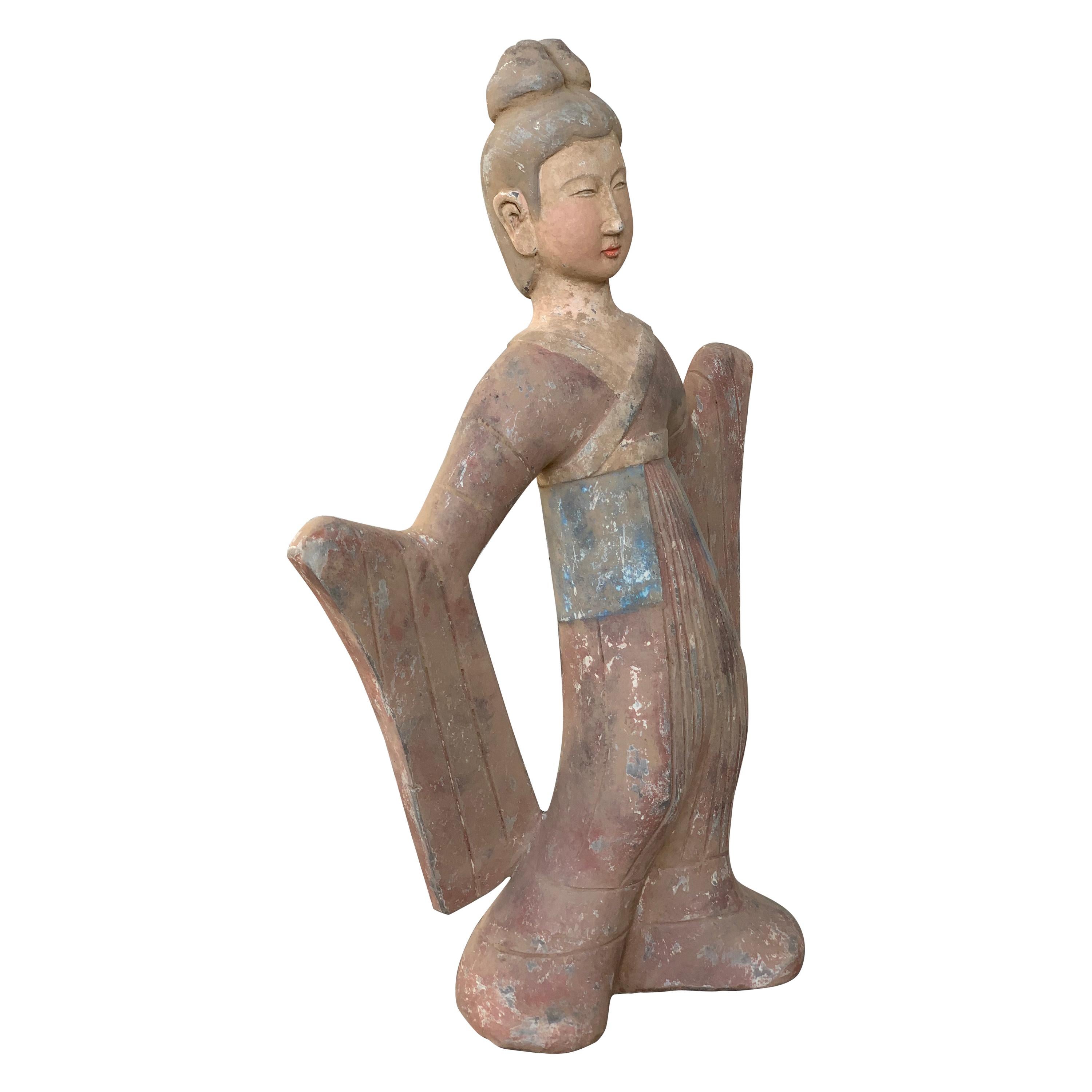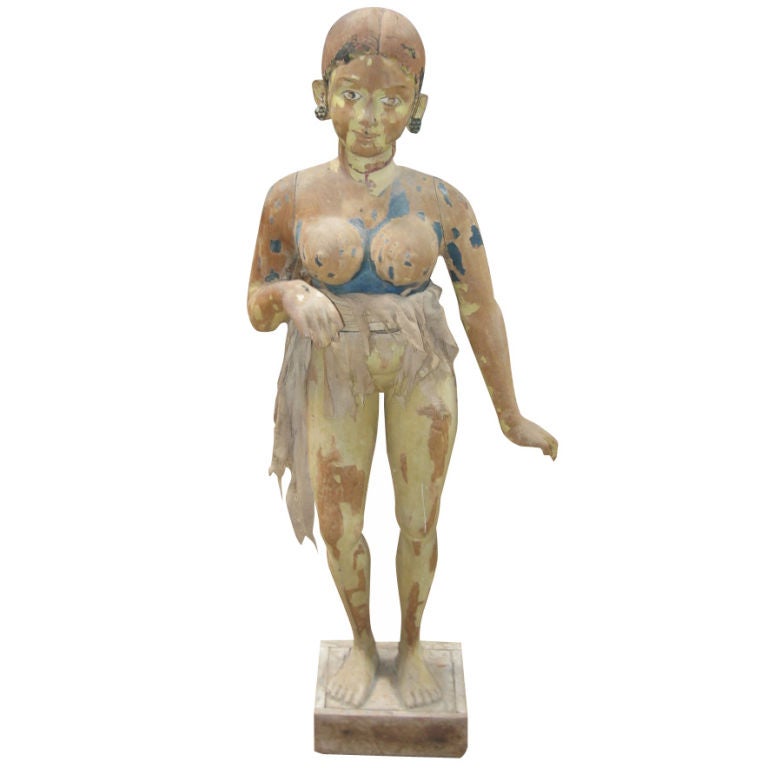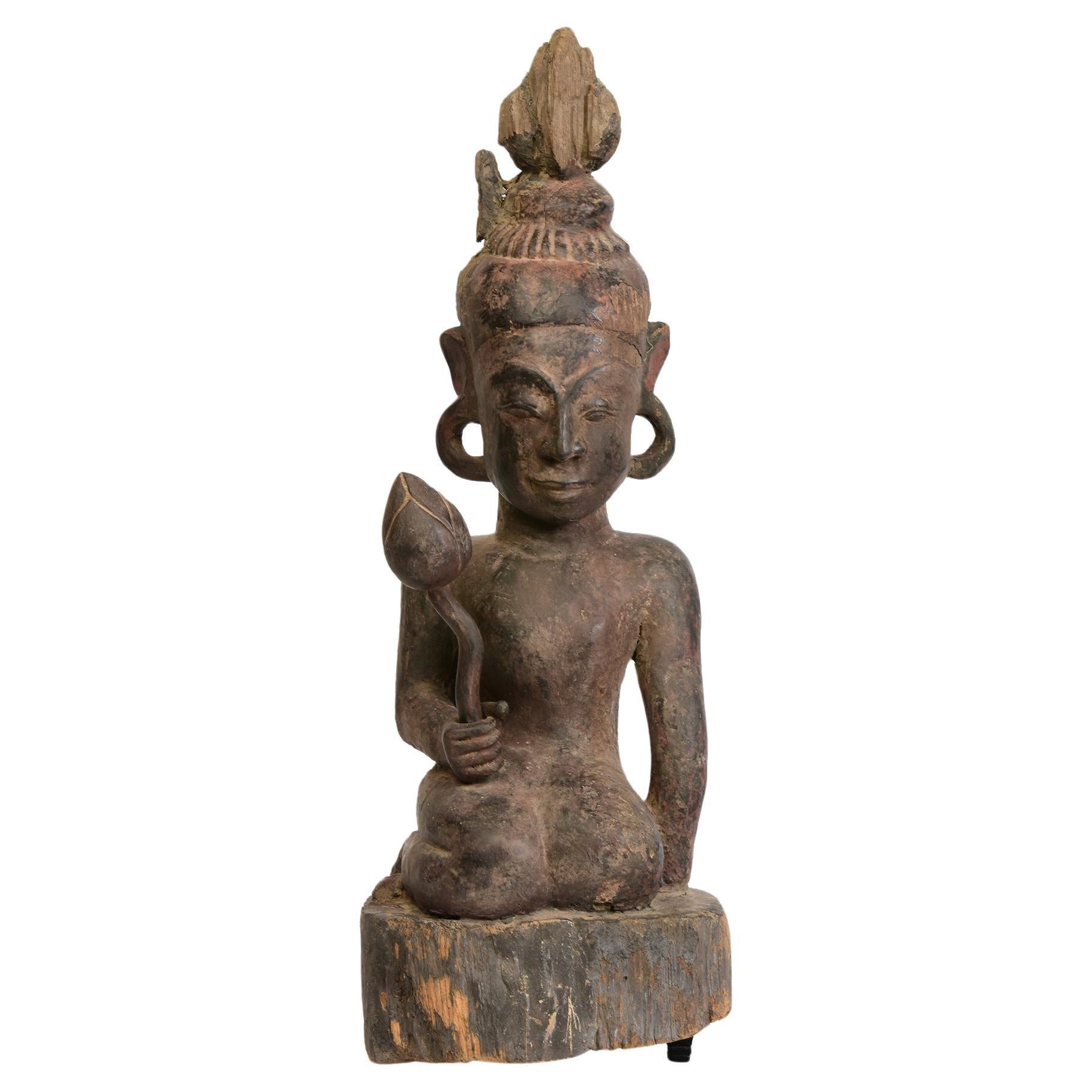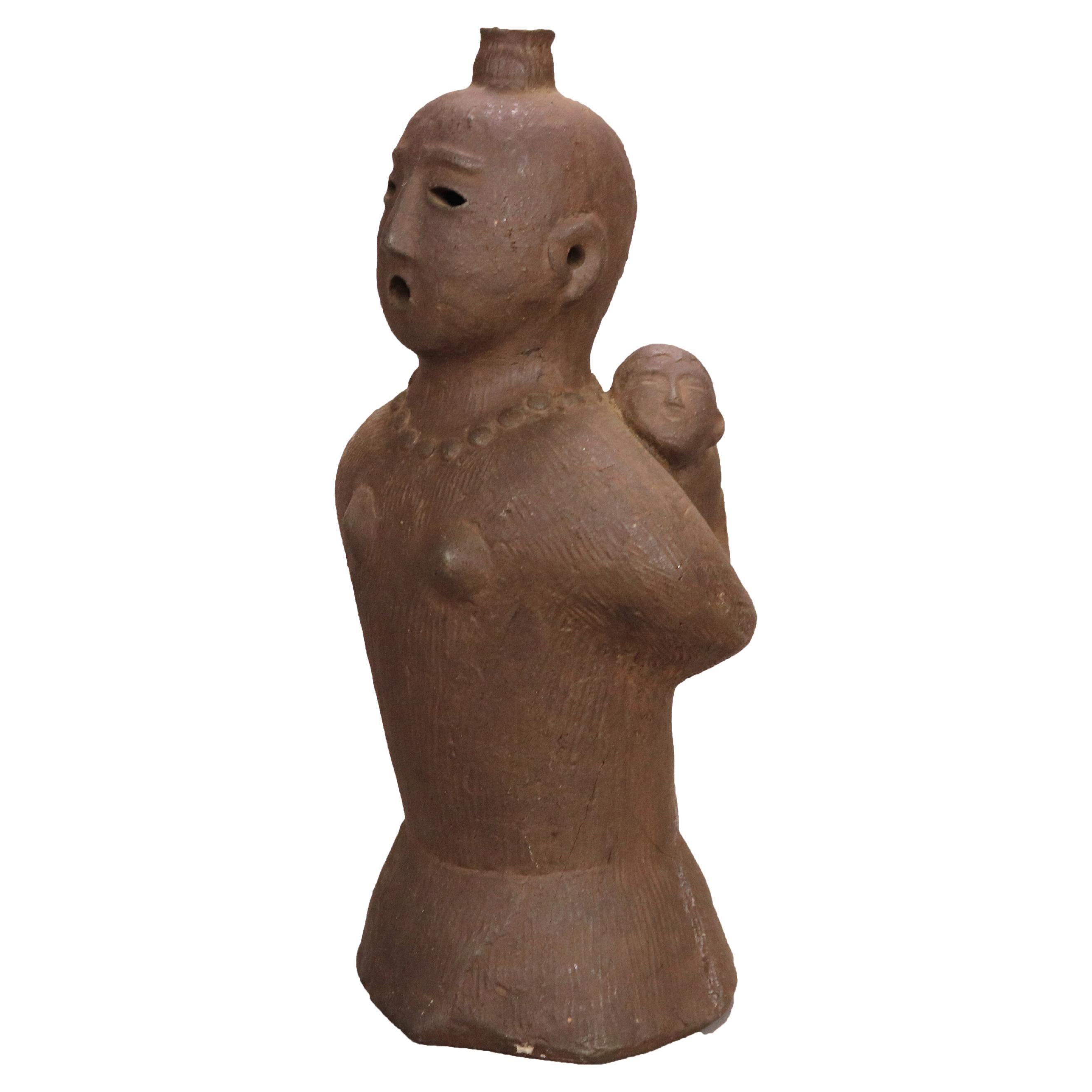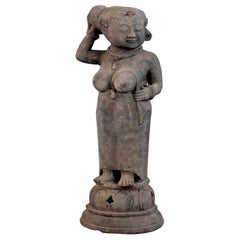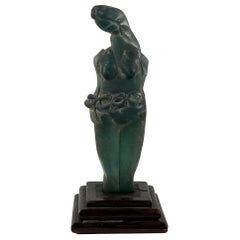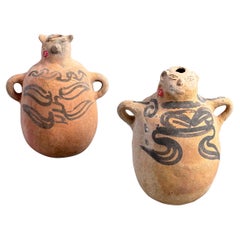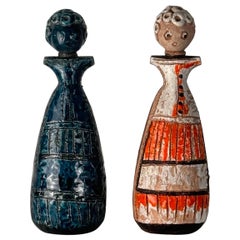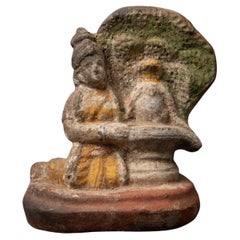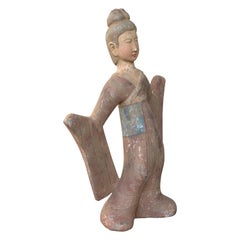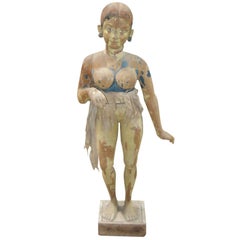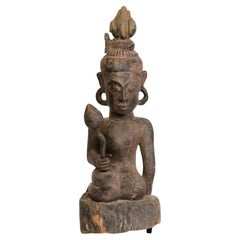Items Similar to 15th Century Majapahit Terracotta Handmaiden Figure (Fertile Woman with Child)
Video Loading
Want more images or videos?
Request additional images or videos from the seller
1 of 21
15th Century Majapahit Terracotta Handmaiden Figure (Fertile Woman with Child)
$9,311.12
£7,013.12
€7,900
CA$12,840.43
A$14,425.65
CHF 7,537.42
MX$176,071.81
NOK 95,703.28
SEK 90,084.47
DKK 60,131.80
About the Item
Immerse yourself in the captivating legacy of the Majapahit Empire with this rare and beautifully preserved 15th-century terracotta handmaiden figure. Depicting a fertile woman tenderly holding her child, this evocative sculpture symbolizes the deep-rooted cultural values of fertility, family, and domestic protection that were integral to Majapahit society. These figures were often kept in households as guardians of the hearth, believed to bring prosperity and ensure the well-being of the family.
This statue radiates a sense of ancient spirituality and reverence. Its connection to both the sacred and the everyday life of Majapahit culture makes it a fascinating piece for collectors and historians alike.
Hailing from the esteemed Trowulan region in East Java, this rare piece has journeyed through centuries before finding its place in the private collection of Anacleto Spazzapan. Documented in the Majapahit catalog on page 144 as figure number 11, it has been meticulously studied and authenticated by Professor Agus Aris Munandar, a prominent authority in Indonesian archaeology.
Professor Munandar, born in 1959, is currently the professor of Indonesian Archaeology at the University of Indonesia in Jakarta. His extensive research focuses on Hindu-Buddhist archaeology, iconography, and the ancient history of Indonesia and Southeast Asia. He served as a member of the Indonesian team of experts at National Cultural Heritage from 2015 to 2018 and previously held the role of Head of Institute and Research at the Faculty of Humanities at the University of Indonesia. Now the head of the Department of Archaeology at the University of Indonesia, Professor Munandar has authored numerous articles and 19 books, many of which delve into Majapahit culture and artifacts, solidifying his reputation as a leading scholar in the field.
Professor Munandar's endorsement, complemented by a preface from Professor Massimo Vidale of the University of Padua, offers invaluable insights into the religious and decorative significance of Majapahit terracotta artifacts. Professor Vidale, an esteemed teacher of archaeological research methodology and oriental archaeology at the Department of Cultural Heritage of the University of Padua, boasts extensive experience in archaeological expeditions across the Near East, Central Asia, and North Africa. He participated in an archaeological mission to Java and is the author of numerous specialized books and articles based on his research findings.
Despite its age, this terracotta handmaiden figure remains remarkably well-preserved, thanks to a meticulous conservation restoration. It comes with a certificate of authenticity, guaranteeing its provenance and historical significance.
With its dimensions of 64 cm in height and 28 cm in diameter, this majestic sculpture commands attention, whether showcased as a striking centerpiece in a modern or eclectic setting or elevated on a pedestal as a museum-worthy masterpiece. This timeless artifact not only enriches the aesthetic of any space but also serves as a lasting symbol of protection, fertility, and prosperity.
- Dimensions:Height: 25.2 in (64 cm)Diameter: 11.03 in (28 cm)
- Style:Folk Art (Of the Period)
- Materials and Techniques:
- Place of Origin:
- Period:
- Date of Manufacture:1500
- Condition:Repaired. Wear consistent with age and use. Minor losses. Despite its age, this terracotta handmaiden figure remains remarkably well-preserved, thanks to a meticulous conservation restoration.
- Seller Location:Bagnolo Mella, IT
- Reference Number:1stDibs: LU8256241423742
About the Seller
5.0
Platinum Seller
Premium sellers with a 4.7+ rating and 24-hour response times
Established in 2022
1stDibs seller since 2023
72 sales on 1stDibs
Typical response time: <1 hour
- ShippingRetrieving quote...Shipping from: Bagnolo Mella, Italy
- Return Policy
Authenticity Guarantee
In the unlikely event there’s an issue with an item’s authenticity, contact us within 1 year for a full refund. DetailsMoney-Back Guarantee
If your item is not as described, is damaged in transit, or does not arrive, contact us within 7 days for a full refund. Details24-Hour Cancellation
You have a 24-hour grace period in which to reconsider your purchase, with no questions asked.Vetted Professional Sellers
Our world-class sellers must adhere to strict standards for service and quality, maintaining the integrity of our listings.Price-Match Guarantee
If you find that a seller listed the same item for a lower price elsewhere, we’ll match it.Trusted Global Delivery
Our best-in-class carrier network provides specialized shipping options worldwide, including custom delivery.More From This Seller
View All15th Century Majapahit Terracotta Handmaiden Figure (Woman Holding Her Hair)
Located in Bagnolo Mella, Brescia
The sculpture captures a moment of serene grace, as the woman delicately holds her hair with her right hand, exuding an air of elegance rarely found in similar works. What makes this piece particularly unique is its unusual coloration: unlike most terracotta figures, which typically exhibit reddish-brown tones, this figure has darkened over time to a striking grey-black-brown hue. This transformation occurred due to centuries of submersion in the mud of the Brantas River, where the natural elements enriched the statue with its distinct coloration (refer to the photos of discoveries during the extraction of other statues, as seen on pages 16-17 of the catalog).
Originating from the Trowulan region in East Java, this handmaiden figure is documented on page 161 as figure number 28 in the Majapahit catalog and stands as a rare example of terracotta craftsmanship from this ancient civilization. The piece has been carefully studied and authenticated by Professor Agus Aris Munandar, a distinguished scholar in Indonesian archaeology.
Professor Munandar, born in 1959, is currently the professor of Indonesian Archaeology at the University of Indonesia in Jakarta. His extensive research focuses on Hindu-Buddhist archaeology, iconography, and the ancient history of Indonesia and Southeast Asia. He served as a member of the Indonesian team of experts at National Cultural Heritage from 2015 to 2018 and previously held the role of Head of Institute and Research at the Faculty of Humanities at the University of Indonesia. Now the head of the Department of Archaeology at the University of Indonesia, Professor Munandar has authored numerous articles and 19 books, many of which delve into Majapahit culture and artifacts, solidifying his reputation as a leading scholar in the field.
This extraordinary figure is accompanied by a preface from Professor Massimo Vidale of the University of Padua, who offers invaluable insights into the significance of Majapahit terracotta...
Category
Antique 15th Century and Earlier Javanese Folk Art Antiquities
Materials
Terracotta
Very Rare Archimede Seguso Etched Murano Glass Woman's Sculpture, 1930s
By Archimede Seguso
Located in Bagnolo Mella, Brescia
Dating back to the glamorous era of the 1930s, this rare sculpture captures the essence of femininity with unparalleled grace and sophistication.
Crafted with meticulous precision, each delicate detail of the woman's form is etched into the glass, showcasing Seguso's mastery of the medium. The fluid lines and subtle curves evoke a sense of movement, as if the figure is frozen in a moment of elegance and poise.
Standing as a testament to the artistic brilliance of its creator, this sculpture is a true collector's treasure. Its rarity adds to its allure, making it a coveted addition to any discerning collector's showcase.
Whether displayed as a standalone statement piece or incorporated into a curated art collection, this exquisite sculpture promises to captivate admirers and elevate any space with its timeless beauty and historical significance.
Don't miss this opportunity to own a piece of art history - acquire this very rare Archimede Seguso etched Murano glass woman...
Category
Vintage 1930s Italian Art Deco Glass
Materials
Murano Glass
Pair of Terracotta Rope Jugs from Mexico, 1970s
By Arte de Mexico
Located in Bagnolo Mella, Brescia
This exceptional pair of hand-painted terracotta pulque jugs, originating from Tuliman, Guerrero in the 1970s, represents a distinctive example of Mexican folk art. Traditionally use...
Category
Vintage 1970s Mexican Mid-Century Modern Jars
Materials
Terracotta
$1,157 / set
Beautiful Pair of Handcrafted Lady Figurines by Aldo Londi for Bitossi, 1970s
By Aldo Londi, Bitossi
Located in Bagnolo Mella, Brescia
Beautiful Pair of Handcrafted Lady Figurines by Aldo Londi for Bitossi, 1970s
This exquisite pair of handcrafted lady figurines, designed by Aldo Londi for Bitossi in the 1970s, sho...
Category
Vintage 1970s Italian Mid-Century Modern Ceramics
Materials
Ceramic
Abstract Decorative Glazed Ceramic Vase Sculpture by Pupo Gino, 1940s, Italy
Located in Bagnolo Mella, Brescia
This extraordinary abstract decorative vase sculpture, crafted by the talented Italian artist Pupo Gino in the 1940s, is a stunning example of mid-20th-century ceramic artistry. The ...
Category
Vintage 1940s Italian Art Nouveau Vases
Materials
Ceramic
1950s Brutalist Ceramic Jug by C.A.S. Vietri – Gray and Earth Tone Glaze
By C.A.S. Vietri
Located in Bagnolo Mella, Brescia
This striking Brutalist ceramic jug from the 1950s, crafted by C.A.S. Vietri, embodies the raw, textured allure of mid-century design. The jug is finished with a distinctive "drop gl...
Category
Vintage 1950s Italian Mid-Century Modern Pottery
Materials
Ceramic
You May Also Like
19th century Antique pottery Parvaty statue from India
Located in DEVENTER, NL
Antique pottery Parvaty statue
Material: Pottery
13,5 cm high
12 cm wide and 7,6 cm deep
19th century
Weight: 424 grams
Originating from India
Category
Antique 19th Century Indian Sculptures and Carvings
Materials
Pottery
Pottery Figure Seductress & Dancer Lady, Han Style Terracotta
Located in Miami, FL
A fantastic Han style terracotta figure. Such a figure is seen in the Han dynasty dating 206 BC-220 AD. The figure is of an alluring girl who is in a showing his suit. She has a full...
Category
Late 20th Century Asian Han Sculptures and Carvings
Materials
Terracotta
Indian Goddess Figurine Statue
Located in Dallas, TX
Beautifully authentic hand carved statue of an Indian deity goddess. Distressed paint finish.
Category
Antique 18th Century and Earlier Indian Folk Art Sculptures
Materials
Paint
18th Century, Antique Burmese Wooden Seated Figure of Lady Holding Lotus
Located in Sampantawong, TH
Antique Burmese wooden seated figure of lady holding lotus.
Age: Burma, 18th Century
Size: Height 55.4 C.M. / Width 18.5 C.M. / Depth 16.5 C.M.
Condition: Some expected degradation ...
Category
Antique 18th Century Burmese Antiquities
Materials
Wood
$920 Sale Price
20% Off
Antique Japanese Pottery Effigie Sculpture of a Woman & Child 18thC
Located in Big Flats, NY
Antique Japanese Pottery Effigie Sculpture of a Woman & Child 18thC
Measures- 11" H x 5.75" W x 4.25" D;
Category
Antique 18th Century Japanese Figurative Sculptures
Materials
Pottery
$600 Sale Price
20% Off
Antique hardwood carved Goddes statue from India, 18th century
Located in Bilzen, BE
An antique carved hardwood statue depicting a goddes with child on her arm
The statue has a very rich aged using patina and traces
This statue is dating from the 18th century but pro...
Category
Antique 18th Century Indian Tribal Tribal Art
Materials
Wood
More Ways To Browse
Ancient Terracotta
1500 Furniture
Terracotta Figural
Terracotta Woman
Oriental Figure
Antique Terracotta Head
Antique Terracotta Statue
Asian Woman Sculpture
Child Head Sculpture
Terracotta Child
Fertility Figures
Indonesian Statue
Fertility Statue
Hindu Statues
Oriental Pedestal
African Fertility Sculpture
Indonesian Artifacts
African Fertility Figure
